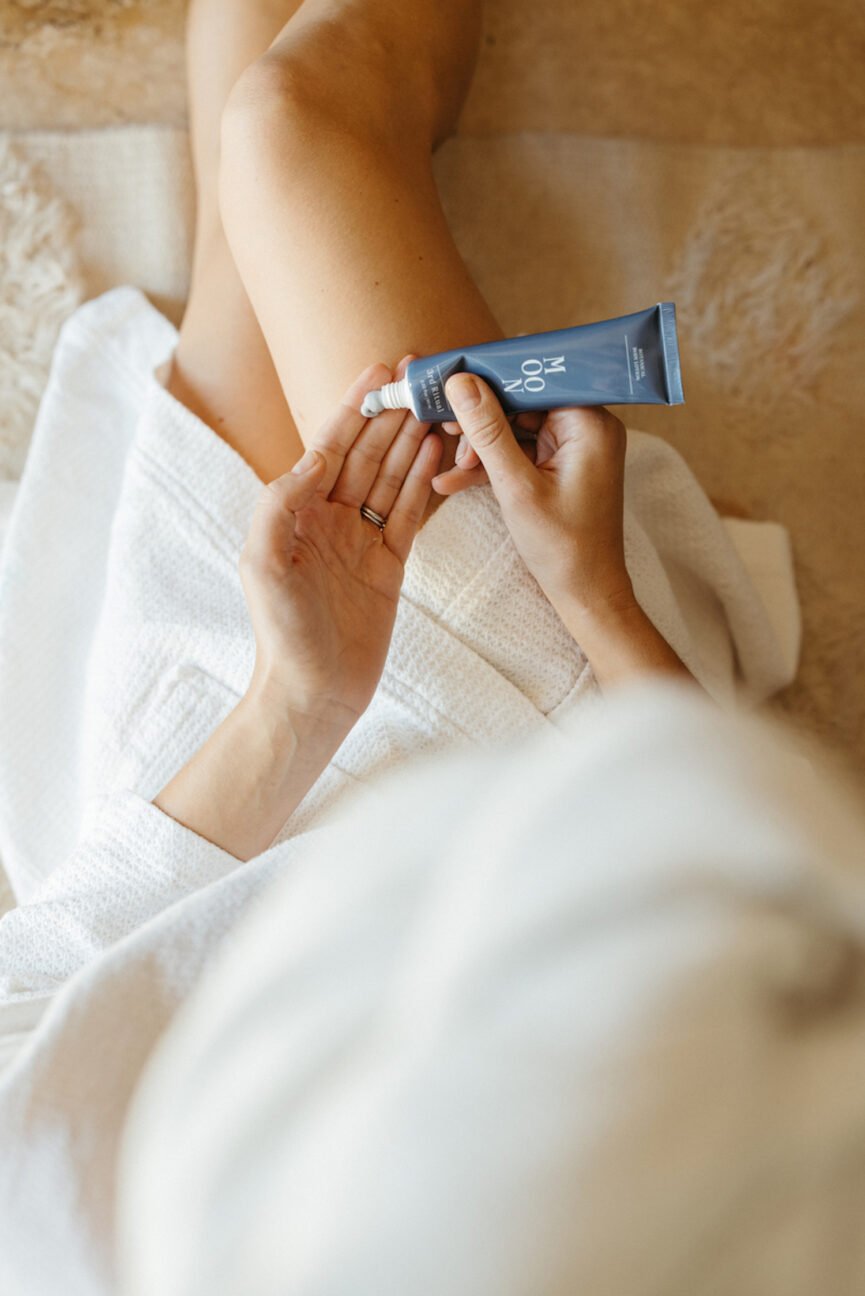
[ad_1]
We may receive a portion of sales if you purchase a product through a link in this article.
All your beauty questions—answered. Our resident dermatologist, Dr. Geddes-Bruce breaks down the biggest topics in beauty, from hair loss to Botox and everything in between. Send us a DM @camillestyles with your own burning q’s and we may address it in a future column.
When John Mayer said: “Gravity is working against me,” he wasn’t talking about skin elasticity… but he might as well have been. Thanks to forces beyond our control—time, gravity, genetics—our skin loses some of that youthful firmness every day. If only my 20-year-old self knew what she had before it was gone. Experts agree that between 25 and 32 is the best time to start proactive skincare. But take heart, it’s never too late to begin. From head to toe, you can prevent skin laxity with a combination of lifestyle choices, non-invasive treatments, and skin tightening creams for the body. To optimize your skincare routine for future-proof firmness, I consulted Camille’s dermatologist, Dr. Elizabeth Geddes-Bruce, about all things skin tightening.
featured image by Michelle Nash, from our interview with Sanne Vloet.

A Dermatologist Shares the Best Skin Tightening Creams for the Body
“Loose skin is basically life, reminding us that nothing stays in place forever,” says our resident dermatologist, Dr. Elizabeth Geddes-Bruce. Skin laxity is inevitable. As you read this, your collagen reserves are depleting (though you might be able to slow that process down with collagen banking) and so is your elastin. Elastin works with collagen to promote skin elasticity, tightness, and firmness. While we don’t have to fear this process, there are some things you can do to slow it down.
For facial elasticity, there are countless collagen supplements and skincare products for skin tightening—not to mention botox, filler, and even optimizing your beauty sleep by using a chin mask or wrinkle patches. But body skin tightening products and treatments are less common. Thankfully, the recent body care renaissance is a reminder not to neglect the areas below the neck.

Dr. Elizabeth Geddes-Bruce
Dr. Geddes is a board-certified dermatologist and dermatologic surgeon at Westlake Dermatology, specializing in the practice of both cosmetic and medical dermatology. She views cosmetic dermatology as synergistic to a happy, healthy lifestyle and regularly counsels her patients in a balanced, natural approach to both cosmetic and medical dermatology.

What causes loose skin?
According to Dr. Geddes-Bruce, loose skin is inevitable. “Factors like intrinsic aging (thank you, time), photoaging from sun exposure, smoking, weight loss, and good old gravity all team up to make your skin less tight over time.”
To minimize the effects of photoaging on your skin, Dr. Geddes-Bruce knows that simple habits have a big impact. She recommends implementing the following lifestyle habits into your routine.
Skin Tightening Myths
While lifestyle changes and products can help reduce the appearance of skin laxity, skin tightening is a journey—not an instant fix. Some of the myths Dr. Geddes-Bruce commonly encounters include:
- Exercise or wearing tight clothing can magically tighten loose skin. While exercise is great for toning the muscles underneath, it won’t shrink saggy skin, and no amount of compression garments will make a long-term difference.
- Drinking gallons of water or slathering on cocoa butter will do the trick. While these can hydrate or temporarily smooth your skin, they won’t restore lost elasticity.
- A cream alone can fix significant skin sagging. Hate to break it to you, but most creams don’t penetrate deeply enough to affect the collagen and elastin breakdown that causes sagging. So if you’re expecting miracles from a jar, you might want to adjust those expectations.
Your body is unique. How you treat it should be, too. “The ‘best’ treatment is highly personal,” says Dr. Geddes-Bruce. “What works for one might not work for another. A consultation with a professional will help tailor the approach to your unique needs and goals.”
While you might not have time for an everything shower every night, in-office treatments can have a significant impact in a short amount of time. “If your skin laxity is mild to moderate, non-surgical treatments like laser resurfacing or devices that use microfocused ultrasound can work wonders. They all help tighten skin and stimulate collagen production, giving you a more youthful, firmer appearance without surgery.”

The Most Effective Skin Tightening Treatments
According to Dr. Geddes-Bruce, these are the best skin tightening treatment options for all different budgets, body types, and skin goals.
Skincare
Try a skin tightening cream for your body. It’s affordable and easy, but it won’t do the heavy lifting (literally). It’s a great first step for maintenance, but don’t expect it to work miracles on its own. They’re appropriate for all skin types with zero downtime.
Biostimulators
These injectable treatments (think Sculptra) work by prompting your skin to produce its own collagen and elastin, which is great for crepey skin. Downsides? They can be uncomfortable and take a few months to show results, and the cost varies depending on the area treated.
Lasers
Resurfacing lasers like CO2 can deliver impressive results, particularly on areas with thinner skin, like around the eyes. The downside? Downtime! You’ll need to baby that skin for at least a week and only trust a highly skilled specialist to wield that laser.
Radiofrequency Microneedling
This treatment targets mild skin laxity and helps with other textural concerns like acne scars and enlarged pores. Multiple sessions are typically needed, and yes, it can be a bit uncomfortable.
Microfocused Ultrasound
One of my favorite non-invasive options! It’s safe for all skin types, has little to no downtime, and subtly tightens the skin over time. Just remember: results won’t be immediate because collagen production is a slow process.
Microcoring
An emerging treatment that removes tiny cylinders of skin, leading to contraction and tightening as it heals. It is mostly used for the face and neck, but it is being tested for other areas like the knees.

The Best Skin Tightening Creams for the Body
According to Dr. Geddes-Bruce, skin tightening creams for the body are the most accessible (and affordable) treatments for firm skin. “Firming creams can make a modest difference in tightening by improving the skin’s surface appearance.”
Just adding a skin serum or skin butter can go a long way. But not all skin tightening creams are created equal. “Look for ingredients like retinoids, peptides, antioxidants, hydroxy acids, growth factors, and caffeine. These ingredients help with fine wrinkles, crepiness, and skin tone.”

[ad_2]